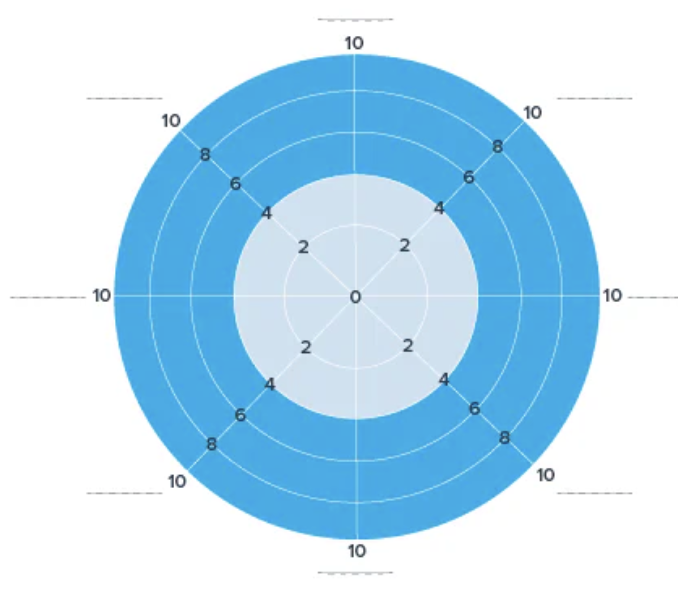Wheel of life exercise for mental health
The Wheel of Life exercise is a self-assessment tool that helps individuals evaluate and balance different areas of their life. It involves drawing a circle divided into sections, each representing a key area such as career, finances, health, relationships, personal growth, and recreation. Individuals rate their satisfaction in each area, providing a visual representation of their life balance.
- Brainstorm Life Areas
Start by brainstorming dimensions of your life that are important for you e.g. family, friends, career, finance, sport, education, relaxation etc.
- Write These Down on the Wheel of Life
Write 6-8 of these dimensions on the diagram, one on each spoke of the life wheel.

- Assess Each Area of the Life Wheel
This approach assumes that you will be happy and fulfilled if you can find the right balance of attention for each of these dimensions. Different areas of your life will need different levels of attention at different times. So, the next step is to assess the amount of attention you’re currently devoting to each area, scoring from 0 (low) to 10 (high).
- Join up the Marks
Now join up the marks around the circle. Does your life wheel look and feel balanced?
- Think About Your Ideal Level for Life Balance
Now consider your ideal level in each area of your life.
A balanced life does not mean getting 5 in each life area: some areas need more attention and focus than others at any time. And inevitably you will need to make choices and compromises, as your time and energy are not unlimited! Plot the “ideal” scores around your life wheel too.
- Take Action
Now you have a visual representation of your current life balance and your ideal life balance. Where are the gaps? These are the areas of your life that need attention.
And remember that gaps can go both ways. There are almost certainly areas that are not getting as much attention as you’d like. However, there may also be areas where you’re putting in more effort than you’d ideally like. These areas are sapping energy and enthusiasm that may better be directed elsewhere.
Once you have identified the areas that need attention, it’s time to plan the actions needed to work on regaining balance. Starting with the neglected areas, what things do you need to start doing to regain balance? In the areas that currently sap your energy and time, what can you stop doing or reprioritize or delegate to someone else?